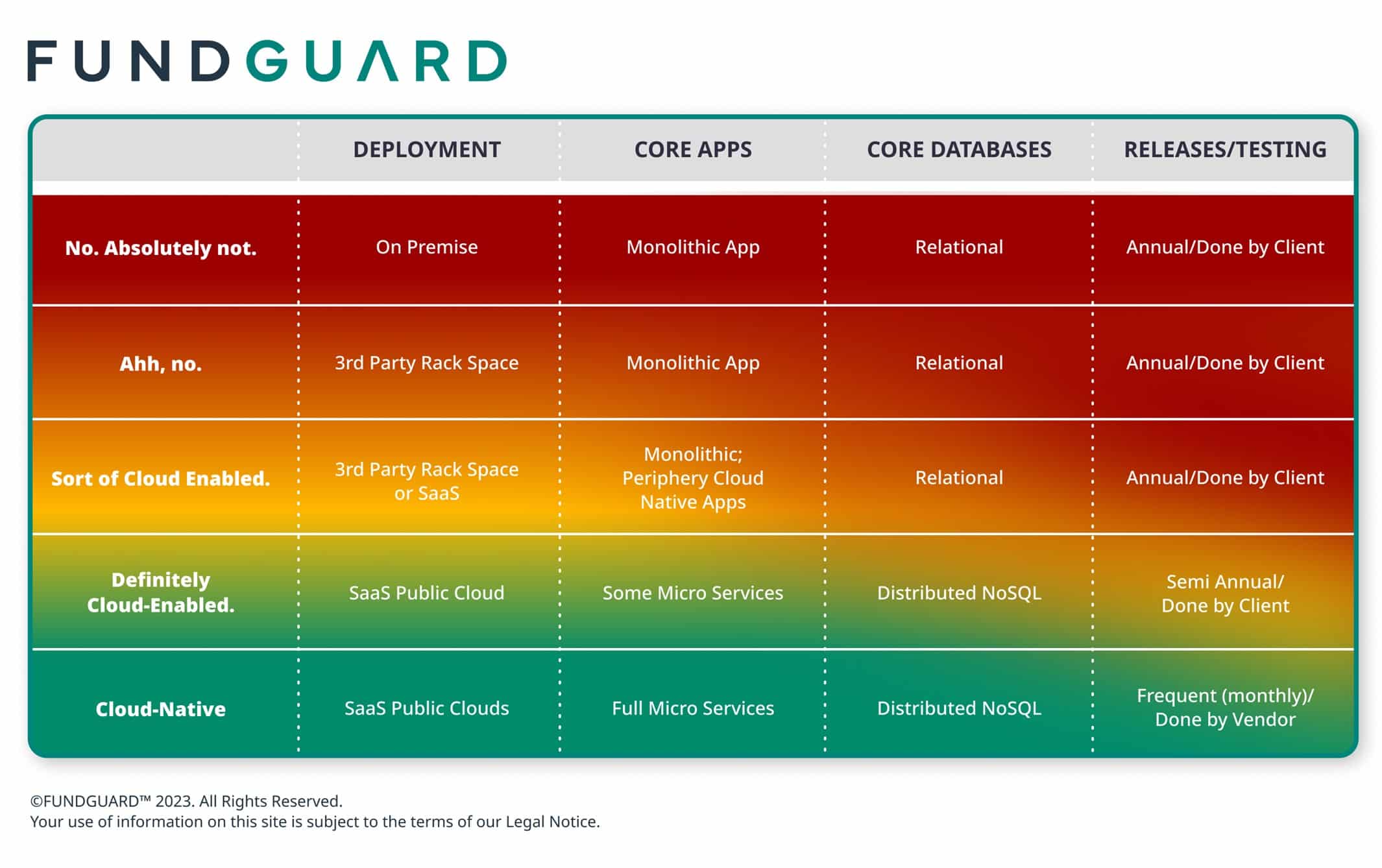
“Cloud-native” is the latest software catchphrase — but how many companies actually deserve the label?
The title of “cloud-native” is not an easy one to earn. To be truly cloud-native is to have all of your applications, development environments and other core software capabilities originate within the cloud.
While countless companies claim the cloud-native title, the truth of the matter is that many are only cloud-enabled rather than born-in-the-cloud software companies. Though these software companies are not wrong to promote their cloud capabilities, conveying themselves as cloud-native can be misleading.
This begs the question: where does the difference between cloud-enabled and cloud-native lie and why, exactly, does this distinction matter for clients working with software-as-a-service (SaaS) providers?
To best understand cloud-natives, the key is to first grasp the concept of being cloud-enabled.
Cloud-enabled is when you receive key support from the cloud but still rely on legacy technology and systems to keep your digital infrastructure functioning. A cloud-enabled software vendor can have varying levels of cloud capabilities depending on how far along they are in their cloud migration.
For instance, a fund administrator providing accounting services might have a cloud native client portal in their technology platform. The portal stores reporting data and improves communications and collaborations with clients.
By implementing this cloud piece to the platform, the firm gains a digital customer experience where effortless user clicks result in only what the customer seeks without them seeing or thinking about any of the behind-the-scenes technology or operations needed to deliver that experience – and this is achieved without transforming the firm’s entire digital infrastructure. Sounds great, right?
Wrong. It’s just a band-aid.
In the short term, a digital portal might look really tempting to build, but if it’s still sitting on top of old tech, it’s going to fall way short of the target. Even if the firm’s old core databases are stored in the cloud, that won’t bring the elasticity benefits of microservices and distributed databases, or the development and testing workflows needed to deliver enhancements rapidly. In the case of many software vendors that are still in the midst of their cloud migrations — or those who have yet to begin such a migration — this use of the cloud is a point solution that addresses only one very specific issue within the business.
Although leveraging point solutions that enable your business to be cloud-enabled can be a useful short-term solution, mixing technology in this way can prove to be highly ineffective in the long run.
Compared to cloud-enabled, cloud-native refers less to leveraging cloud capabilities and more to building a fully capable digital infrastructure directly out of the cloud.
A cloud-native infrastructure and development environment – one code-base and multi-tenant – is more flexible and scalable compared to cloud-enabled alternatives.
Reaching a true digital infrastructure is going to first require a complete make-over that must start with assumptions and requirements for things such as:
Cloud-native SaaS operates under an assumption of continuous software delivery – and a perpetual state of readiness. This is such a different starting point than the designs of monolithic relational database applications of the past.
Applications built on relational databases by nature are about writing data once, into a series of interrelated tables with strictly defined columns and rows; then building table relationships to execute complex batched queries for the output that is needed. The work involved to add application enhancements and related changes to the database structure, and then roll-out to clients is slow and painful. These legacy system databases are not organized into anything that remotely resembles data in a customer-ready state. And the validation of the key data outputs is difficult because often they are seen only after executing the batched queries required to produce report data, which is secondary to the core data. This separation makes it more difficult for developers to validate their new code.
On the other hand, the always current data models of cloud-native cloud SaaS applications are so close to the data that they can offer much more frequent testing via blue-green deployment, making it simpler to roll out new features and small adjustments quickly and with no downtime.
Companies that tout being cloud-native and having robust cloud capabilities can sometimes fail to put their money where their mouth is. This is what we like to call cloudwashing — the act of conveying misleading information about one’s true cloud capabilities.
As a result, the operational efficiencies, cost savings, and other benefits of the cloud can prove to be a far call away from what they were advertised as – or what the consumer might assume to be gaining. Additionally, a cloud-enabled solution cannot provide the same scalability, cybersecurity or disaster recovery benefits as a cloud-native solution.
From a customer’s perspective, this distinction is hugely important depending on what the client hopes to get from a cloud native SaaS provider. If a client goes in thinking they can achieve not only a digital user experience, but all that is implied with a cloud-native application (continuous delivery and vendor testing responsibilities, microservices, processing power elasticity, etc.), then unfortunately this can leave a big stain on the cloud-native brand.
So, for both the sake of cloud-native credibility and client satisfaction, having a clear distinction between what it means to be enabled versus native is crucial.
When it comes to how a company can become cloud-native, the reality is that it could take time.
To be truly cloud-native is to be born in the cloud and requires a total transformation and restructuring of a firm’s business model to be based entirely out of the cloud — essentially creating an entirely new business infrastructure from the ground up.
So how can you avoid being cloudwashed? Check out our handy cloud-washing decoder to determine how close to “cloud native” your vendors’ claims really are.

FundGuard offers a real-time single source of truth, enabling you to view data on demand and integrate it seamlessly across different applications and workflows. Along with assisting your business in achieving greater flexibility and scalability, FundGuard also ensures you can meet regulatory changes with ease.
Business resiliency has never been more important in the asset management space — and FundGuard has both the industry expertise and technical prowess to support your requirements.
Key features of FundGuard’s all-in-one investment accounting solution include:
Contact FundGuard today to experience the cross-enterprise benefits of a truly cloud-native investment accounting solution.
Sign up for FundGuard Insights

Your use of information on this site is subject to the terms of our Legal Notice.
Please read our Privacy Policy.